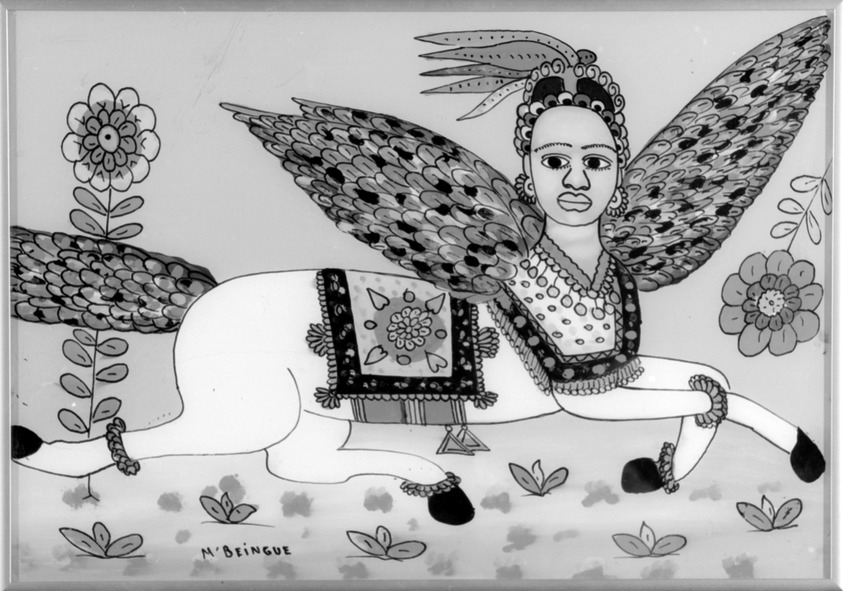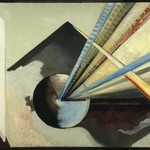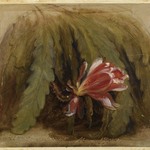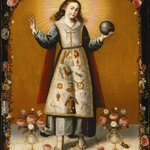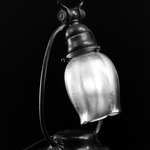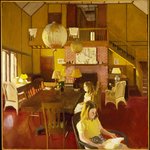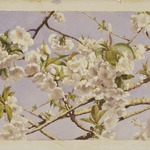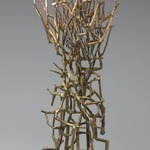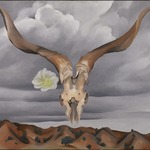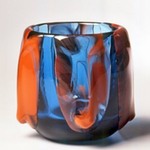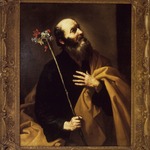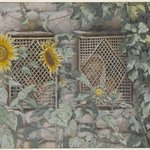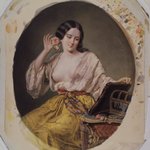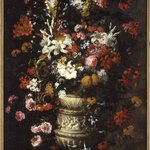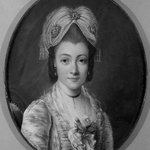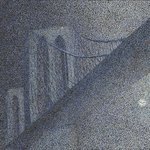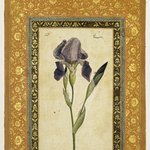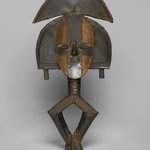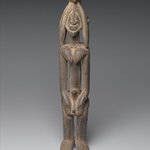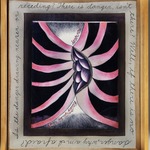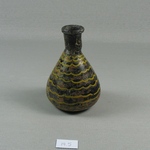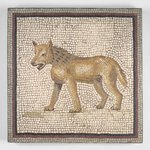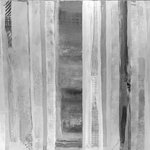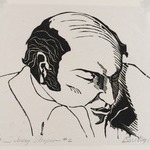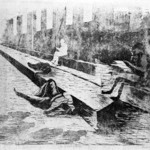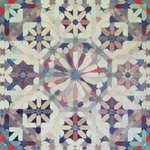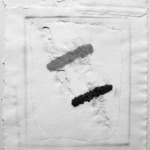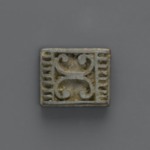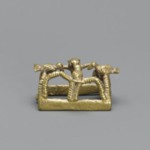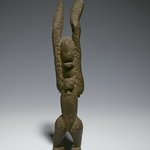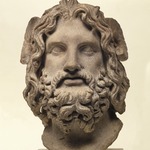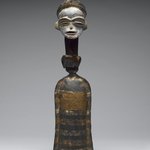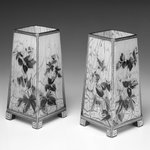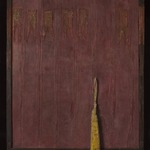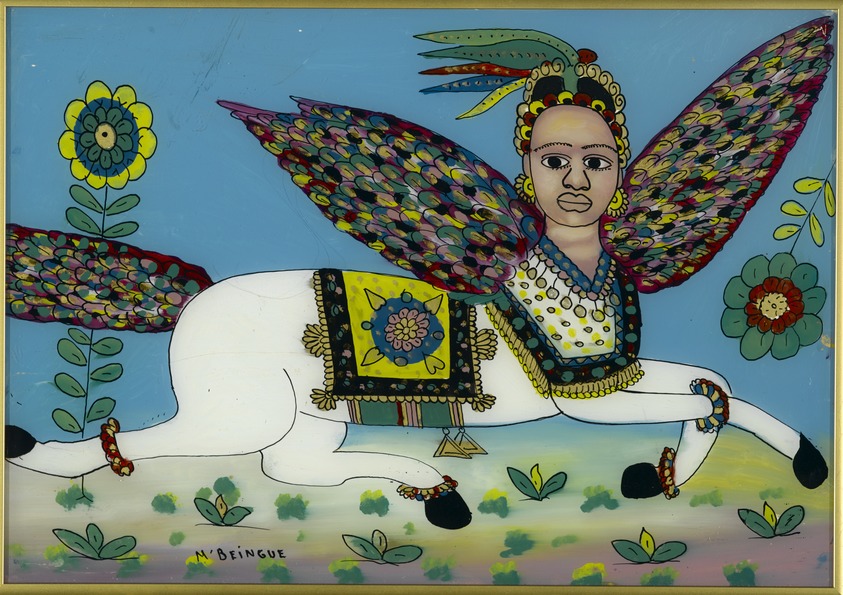
This image is presented as a "thumbnail" because it is protected by copyright. The Brooklyn Museum respects the rights of artists who retain the copyright to their work.
Al-Buraq
Arts of Africa
ART OF BELIEF
Each of these works is the product of a religious tradition that synthesized and adapted new beliefs and art forms to existing faith systems. Both objects are testaments to the long-standing global nature of African religions, ideas, and art.
The stone sculpture represents Serapis, a composite god created early in the Ptolemaic (Greek) rule of Egypt to unite Greeks and Egyptians. The deity combined aspects of Egyptian gods (especially Osiris, the ruler of the Underworld) with Greek deities (particularly Zeus, the king of the gods). Worship of Serapis continued in the Roman period and eventually spread to Europe.
The painting depicts al-Buraq, the winged horse with a woman's head on which the prophet Muhammad flew the mi'raj, his nocturnal journey to heaven to meet God. Like many in Senegal, Gora Mbengue was a member of a Sufi order, a group dedicated to the practice of a mystical interpretation of Islam. Sufism played an important role in the spread of Islam in West Africa, inspiring schools and movements particularly open to melding new and existing systems of belief and image making. Reverse glass painting (souwère) developed by 1900 in Senegal's cities, as pilgrims on the hajj to Mecca brought the technique back from the eastern Mediterranean.
Each of these works is the product of a religious tradition that synthesized and adapted new beliefs and art forms to existing faith systems. Both objects are testaments to the long-standing global nature of African religions, ideas, and art.
The stone sculpture represents Serapis, a composite god created early in the Ptolemaic (Greek) rule of Egypt to unite Greeks and Egyptians. The deity combined aspects of Egyptian gods (especially Osiris, the ruler of the Underworld) with Greek deities (particularly Zeus, the king of the gods). Worship of Serapis continued in the Roman period and eventually spread to Europe.
The painting depicts al-Buraq, the winged horse with a woman's head on which the prophet Muhammad flew the mi'raj, his nocturnal journey to heaven to meet God. Like many in Senegal, Gora Mbengue was a member of a Sufi order, a group dedicated to the practice of a mystical interpretation of Islam. Sufism played an important role in the spread of Islam in West Africa, inspiring schools and movements particularly open to melding new and existing systems of belief and image making. Reverse glass painting (souwère) developed by 1900 in Senegal's cities, as pilgrims on the hajj to Mecca brought the technique back from the eastern Mediterranean.
ARTIST
Gora Mbengue, 1931–1988
CULTURE
Wolof
MEDIUM
Glass, paint
DATES
1975
DIMENSIONS
13 1/2 x 19 1/4 in. (34.3 x 48.9 cm) (show scale)



SIGNATURE
M'Beingue
COLLECTIONS
Arts of Africa
ACCESSION NUMBER
2004.52.21
CREDIT LINE
Gift of Blake Robinson
CATALOGUE DESCRIPTION
Figure of Al-Buraq (winged half human, half horse) painted on glass with gold metal frame. Condition good.
EXHIBITIONS
MUSEUM LOCATION
This item is not on view
CAPTION
Gora Mbengue (1931–1988). Al-Buraq, 1975. Glass, paint, 13 1/2 x 19 1/4 in. (34.3 x 48.9 cm). Brooklyn Museum, Gift of Blake Robinson, 2004.52.21. © artist or artist's estate (Photo: Brooklyn Museum, 2004.52.21_PS2.jpg)
IMAGE
overall, 2004.52.21_PS2.jpg. Brooklyn Museum photograph, 2009
"CUR" at the beginning of an image file name means that the image was created by a curatorial staff member. These study images may be digital point-and-shoot photographs, when we don\'t yet have high-quality studio photography, or they may be scans of older negatives, slides, or photographic prints, providing historical documentation of the object.
RIGHTS STATEMENT
© artist or artist's estate
Copyright for this work may be controlled by the artist, the artist's estate, or other rights holders. A more detailed analysis of its rights history may, however, place it in the public domain.
The Museum does not warrant that the use of this work will not infringe on the rights of third parties. It is your responsibility to determine and satisfy copyright or other use restrictions before copying, transmitting, or making other use of protected items beyond that allowed by "fair use," as such term is understood under the United States Copyright Act.
For further information about copyright, we recommend resources at the United States Library of Congress, Cornell University, Copyright and Cultural Institutions: Guidelines for U.S. Libraries, Archives, and Museums, and Copyright Watch.
For more information about the Museum's rights project, including how rights types are assigned, please see our blog posts on copyright.
If you have any information regarding this work and rights to it, please contact copyright@brooklynmuseum.org.
RECORD COMPLETENESS
Not every record you will find here is complete. More information is available for some works than for others, and some entries have been updated more recently. Records are frequently reviewed and revised, and we welcome any additional information you might have.
